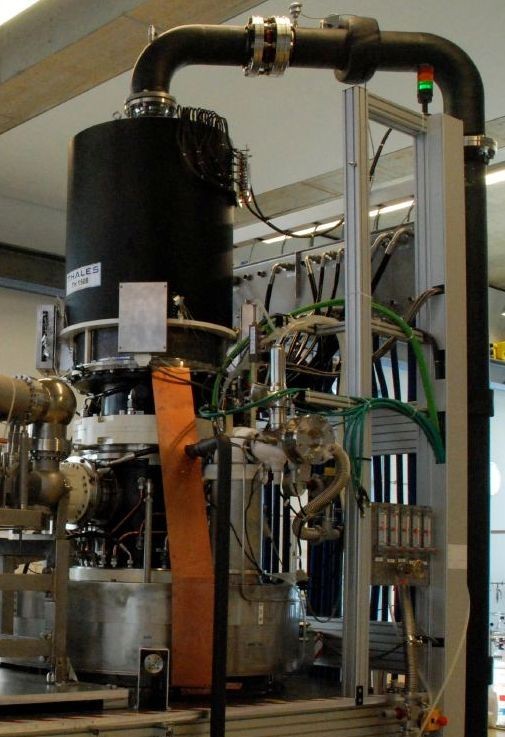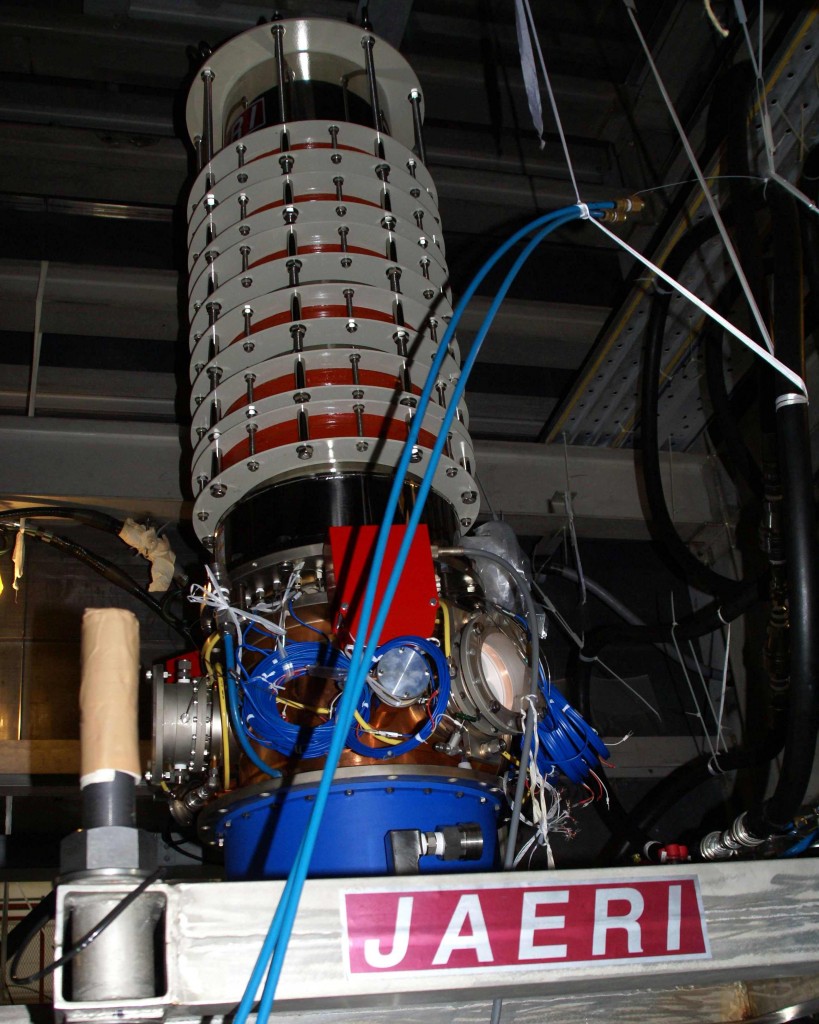ITER NEWSLINE
105
Turning up the heat
Caroline Darbos, Electron Cyclotron Heating & Current Drive

The 2MW gyrotron developed by Europe ...

... and the mockup developed in Japan.
The device that will be used to send microwaves into the plasma of the biggest fusion furnace ever built is called the electron cyclotron heating and current drive system (ECRH). It is one of the three radiofrequency (RF) heating systems that will be used in ITER. The ECRH heats the electrons in the plasma with a high-intensity beam of electromagnetic radiation at a frequency of 170 GHz; the resonant frequency of electrons. The electrons, in turn, transfer the absorbed energy to the ions by collision and thus generate heat.
For the ECRH system, a major component is being developed called a gyrotron, a powerful microwave generator. The gyrotron is capable of producing 1MW of output power—equivalent to 20,000 microwave ovens—at the frequency of 170 GHz. In total, 26 gyrotrons will be installed in ITER. They will be procured by four different Members—Europe, India, Japan and the Russian Federation—with at least three different designs. Currently, the various prototypes are under development.
At present, the Japanese gyrotron has already reached 1 MW for 800 s (0.8 MW for 1 h) and undergone preliminary modulation tests at full power. The Russian gyrotron, after modification of its test-bed and improvement of the high voltage power supply, has performed at 1 MW during 200 s (0.8 MW during 800 s). Europe is developing a new technology, aiming to manufacture gyrotrons capable of producing 2 MW. The technology was first implemented on a prototype capable of producing the power during a short pulse (tens of ms); good preliminary results on another pre-prototype (2.2 MW for 1 ms) give confidence in the future performance of the next prototype which is currently being refurbished with improvements to the mode converter system, the beam tunnel and the electron gun.
return to Newsline #105



